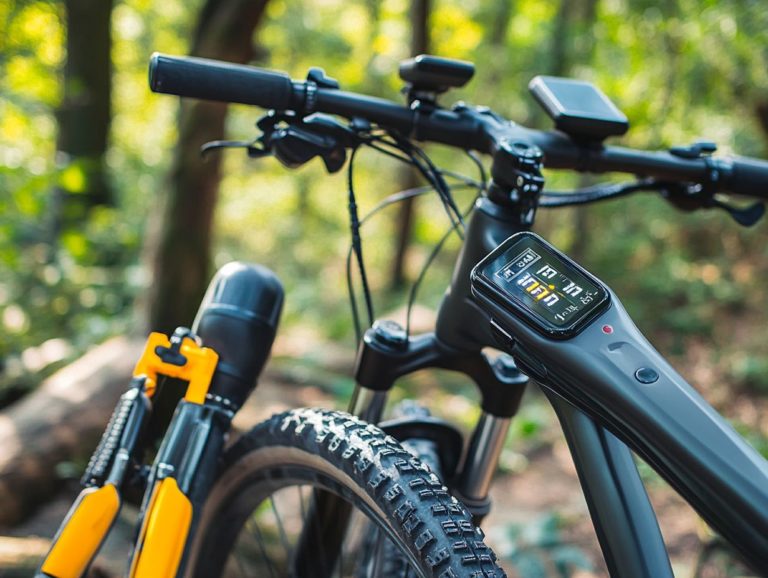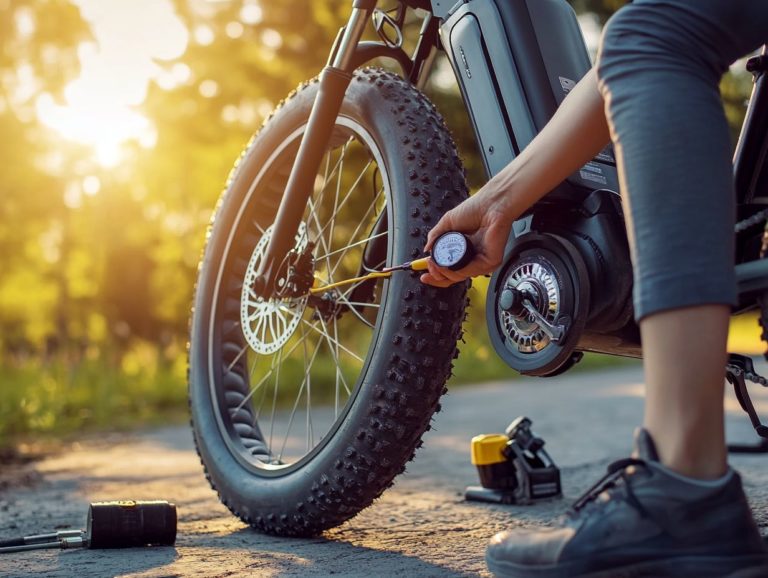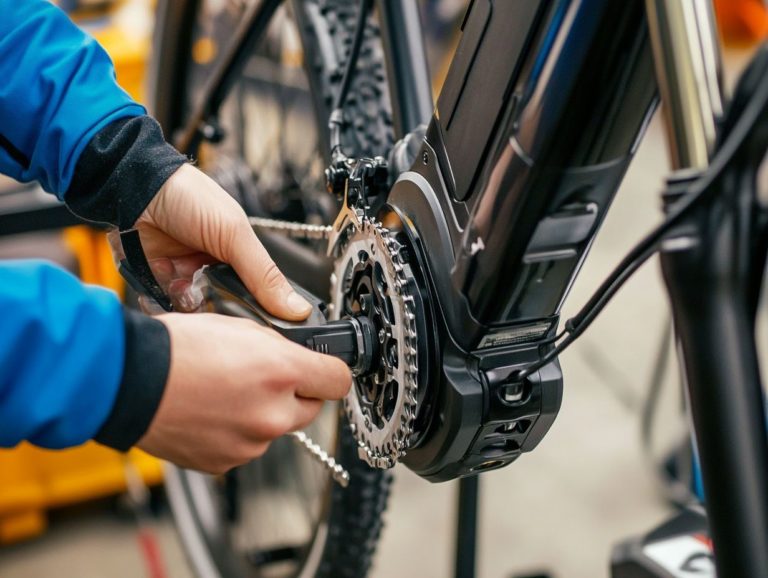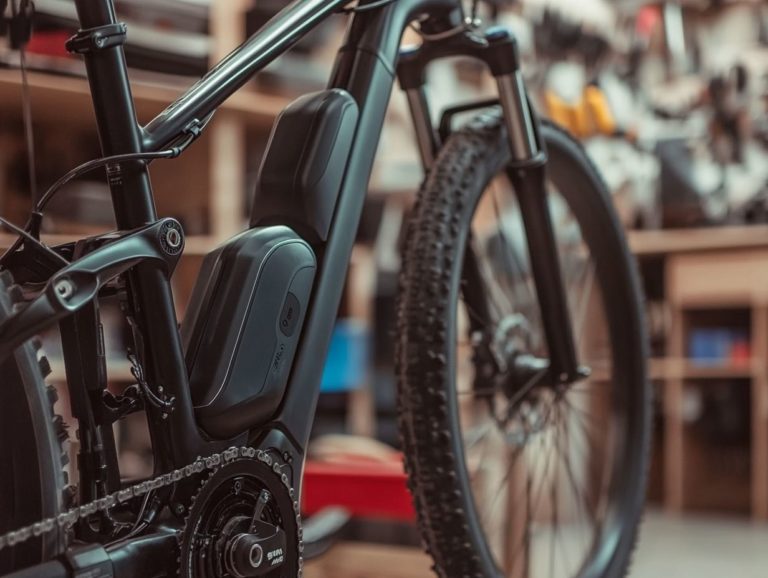How to Fix Common Electric Bicycle Noise Problems
Electric bicycles promise a smooth ride, but noise issues can swiftly transform that pleasure into irritation.
Understanding the different types of noise be it from brakes, chains, or motors is crucial for any e-bike enthusiast like yourself.
Let’s dive in! This article explores common noise problems and their sources while offering practical solutions, including essential maintenance tips and electric bike troubleshooting techniques.
By facing these issues directly, you can elevate your riding experience and stave off future disturbances.
Dive in to uncover how to keep your e-bike running quietly and smoothly!
Contents
- Key Takeaways:
- Understanding the Causes
- Identifying Common Noise Problems
- Fixing Noisy Brakes
- Addressing Chain Noise
- Solving Motor Noise
- Preventing Future Noise Issues
- Frequently Asked Questions
- What are common electric bicycle noise problems?
- How do I identify the source of the noise?
- What should I do if my electric bicycle is making a grinding noise?
- How can I fix a clicking noise coming from my electric bicycle?
- Why is my electric bicycle making a squeaking noise?
- How can I prevent electric bicycle noise problems?
Key Takeaways:
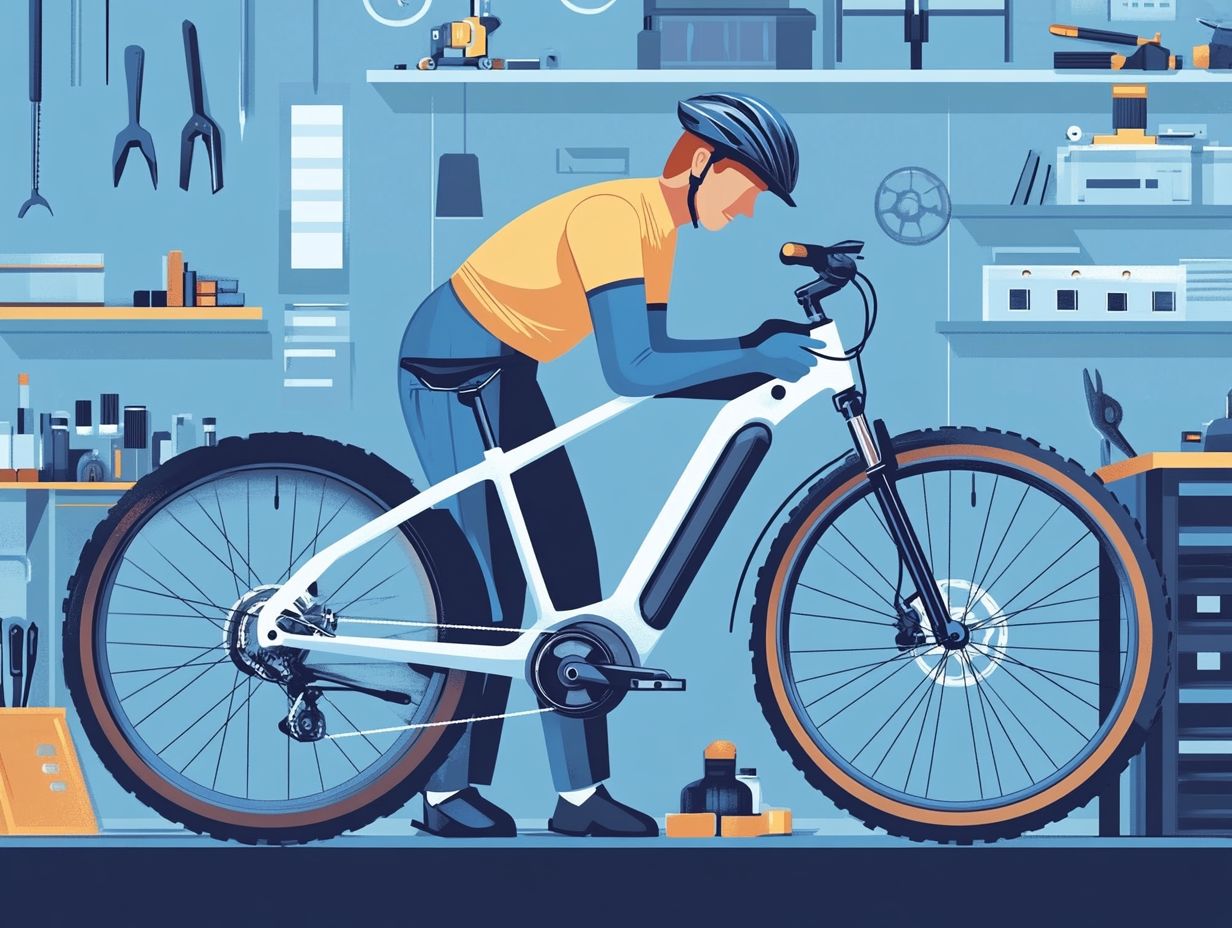
- Regular maintenance can prevent noise problems, such as punctured wheels and flat tires.
- Noisy brakes can be fixed through adjustments and proper maintenance.
- Chain noise can be addressed by regular cleaning and lubrication techniques, particularly focusing on areas such as the rear wheel and front wheel.
- Troubleshooting and repairs can help solve motor noise problems.
- Understanding the causes behind noise problems can help prevent them in the future.
Understanding the Causes
Understanding the root causes of common issues in electric bikes like punctured wheels, damaged wheels, and batteries that refuse to charge is essential for elevating your riding experience.
These challenges often arise from a range of factors, including broken brake sensors, faulty wiring, or simple maintenance oversight.
Additionally, issues like battery wire can also contribute to noise problems.
Identifying Common Noise Problems
Common noise issues in electric bikes can greatly affect your riding experience, often pointing to deeper problems like loose handlebars or faulty brakes.
Throttle issues can cause an unstable ride. Recognizing these noises early can enhance both your bike’s performance and your safety.
Whether it’s grinding sounds from the brake system or rattles caused by loose components, each noise serves as a signal of a potential issue that deserves your attention.
Types of Noise and Possible Sources
Understanding the types of noise that might arise from your electric bike is essential for effective troubleshooting.
Common culprits include the brake system, throttle, and pedal assist mechanisms, which help you pedal more easily.
Each noise can signal different underlying issues, ranging from worn brake pads to wiring problems in the throttle system.
For example, if you hear squeaking when applying the brakes, it might indicate that the brake pads are worn or contaminated, necessitating either cleaning or replacement.
On the other hand, a grinding noise from the throttle system could suggest a problem with the motor or wiring, hinting at potential electrical faults that require your immediate attention.
Similarly, rattling from the pedal assist may indicate loose components or misalignments.
Taking the time to investigate these sounds not only aids in identifying issues but also enhances your riding experience, keeping your performance at its peak.
Fixing Noisy Brakes
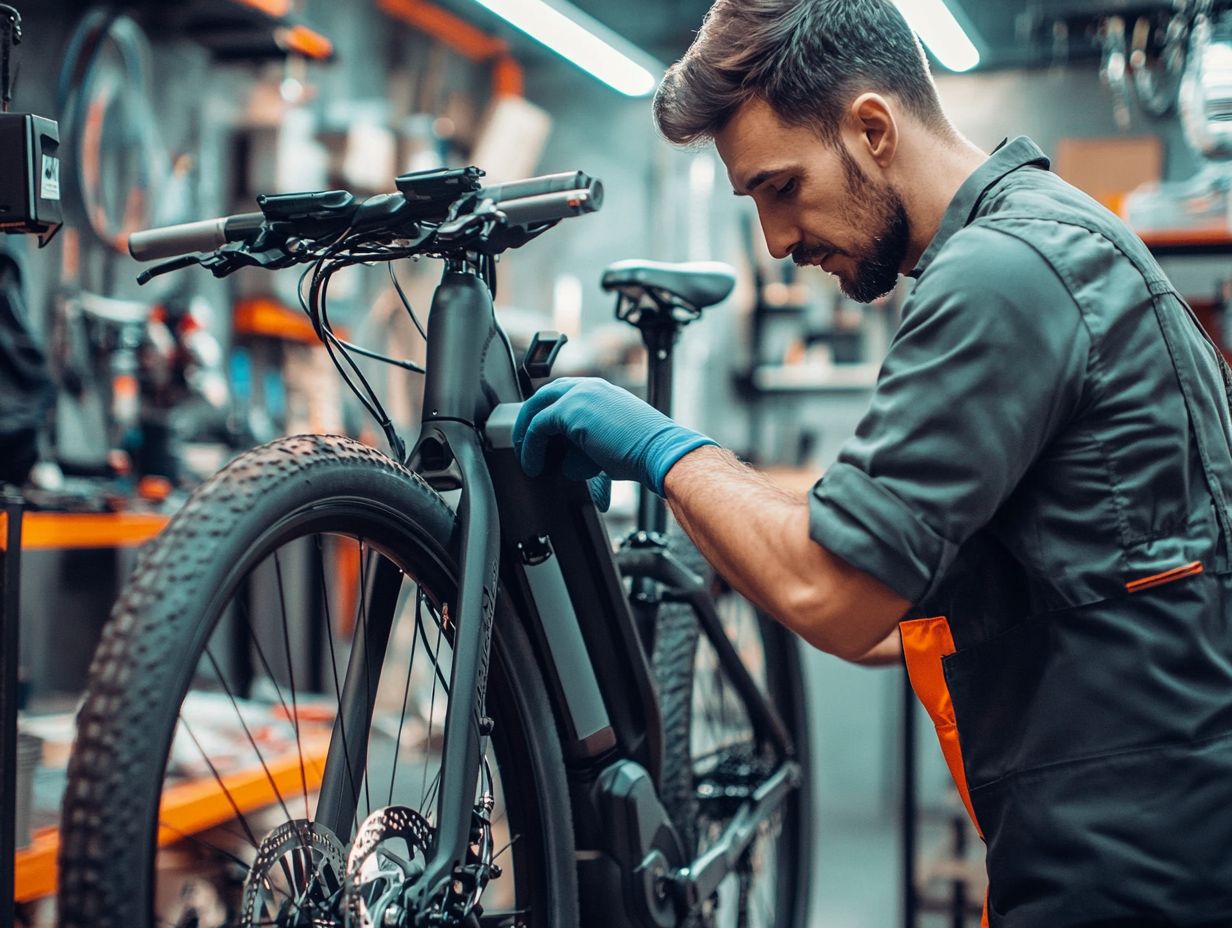
Fixing noisy brakes on electric bikes is crucial not just for boosting performance but also for keeping you safe on the road.
Common offenders often include worn-out brake pads and faulty hydraulic brake systems.
To tackle these issues, you ll need to pinpoint the source of the noise.
This might involve a thorough inspection of the brake pads, discs, and the entire brake system for any signs of damage or wear.
With the right maintenance tips and adjustments, you can bring back that quiet functionality to your bike s brakes, allowing you to ride with confidence and peace of mind.
Take action today to keep your e-bike quiet and smooth!
Adjustments and Maintenance Tips
Act now to take proper care of your electric bike brakes! Routine adjustments and maintenance are essential for ensuring they operate quietly and efficiently. By caring for them properly, you not only extend the lifespan of the brake components but also enhance your overall safety.
In addition to crucial checks, regularly inspect your brake pads for wear and tear, replacing them as needed to maintain optimal stopping power. Keep an eye on the brake cables; ensure they are free from fraying and adjust the tension if they feel loose, as this can significantly impact responsiveness during your rides.
Don t forget to clean the brake surfaces and components regularly to prevent dirt buildup, which can lead to unwanted noise and hinder performance. By prioritizing these maintenance tasks, you can enjoy a smoother, safer ride while proactively preventing potential issues before they escalate.
Addressing Chain Noise
Addressing chain noise in your electric bike is crucial for achieving a smooth and efficient ride. Inadequate cleaning often causes issues, as does improper lubrication techniques.
By committing to regular maintenance of the chain, you reduce noise and elevate the overall performance and longevity of your electric bike.
Familiarize yourself with the correct methods for cleaning and lubricating your bike’s chain to significantly enhance your riding experience.
Cleaning and Lubrication Techniques
Effective cleaning and lubrication techniques for your electric bike’s chain can significantly enhance your riding experience. A well-maintained chain operates smoothly, minimizing noise and boosting efficiency. By regularly cleaning your chain and using the right lubricants, you prevent dirt buildup and friction, ultimately extending the lifespan of both the chain and the bike. Mastering these techniques is essential for any electric bike enthusiast.
To keep your chain in peak condition, aim to clean it every 100 miles or after riding in wet conditions. Use a bike chain cleaner, paired with a soft-bristled brush to remove grit effectively.
After cleaning, apply a high-quality bike-specific lubricant to reduce wear. As an electric bike owner, choose between dry or wet lubricants based on your local weather. Dry formulas are ideal for arid climates as they attract less grime, while wet lubricants provide superior protection in rainy conditions.
Always remember to wipe off any excess lubricant. This simple step prevents dirt from accumulating, ensuring your chain remains free of debris and functions seamlessly.
Solving Motor Noise
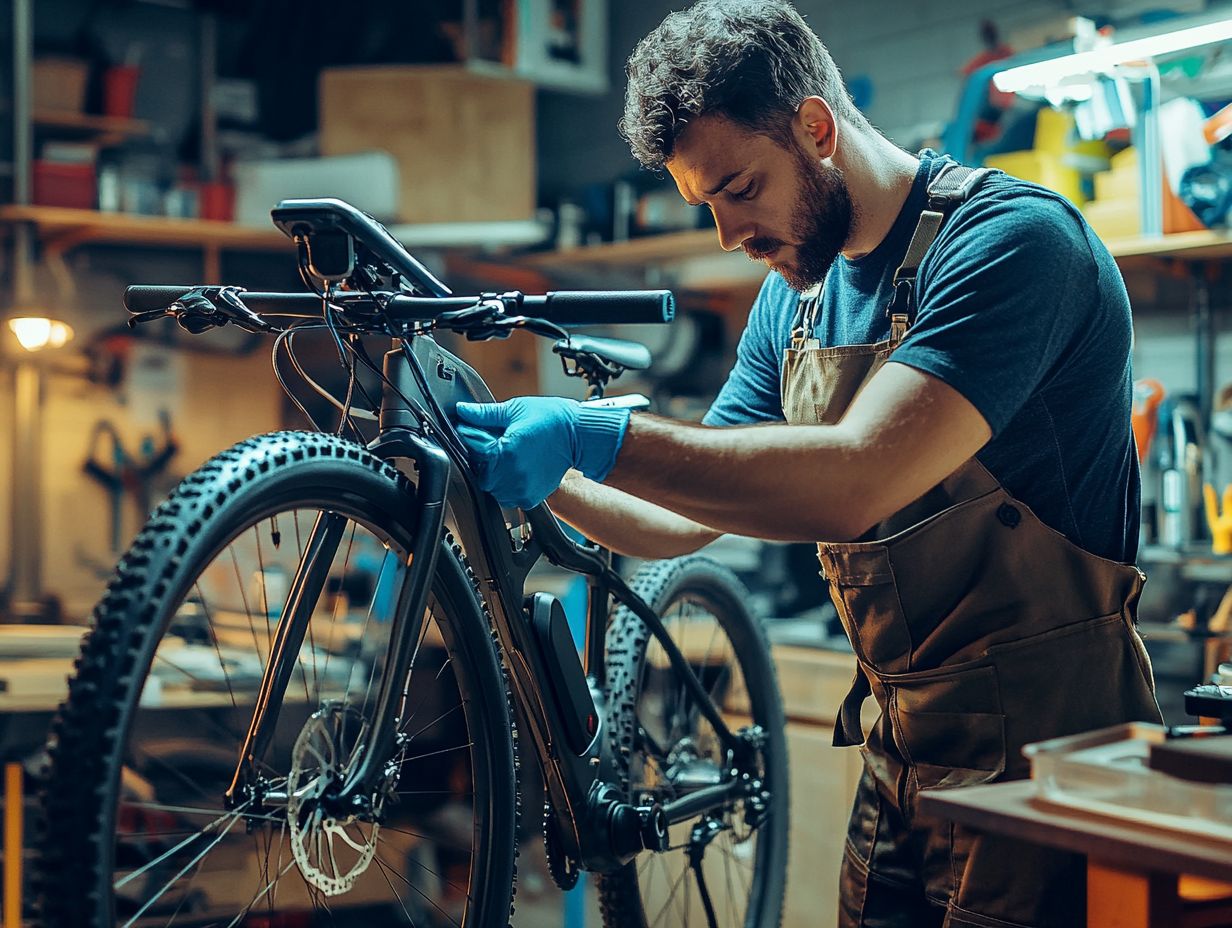
Addressing motor noise in electric bikes is essential for achieving a smooth and enjoyable riding experience. This noise may signal a range of issues, from concerns with the electric motor to problems with the battery wiring or even an E-07 error.
By pinpointing the source of the motor noise, you can prevent further complications and ensure your bike operates at its best. Employ effective troubleshooting techniques to tackle these challenges and enhance your electric bike’s overall performance.
Troubleshooting and Repair Tips
Troubleshooting and repairing motor noise in electric bikes can profoundly enhance both performance and rider comfort. Understanding potential causes is your first step toward resolving these issues. You might encounter common problems such as loose components, battery issues, or electrical faults in the motor. Utilize effective troubleshooting techniques to swiftly identify and address the source of the noise.
Begin by examining the bike’s battery connections. Loose or corroded terminals can create electrical disruptions that lead to unwanted noise. Ensure that all wires are secure and look for any obvious signs of wear or damage.
Next, inspect the motor for loose bolts or foreign debris that might hinder its performance. If the noise persists, check the bike s drivetrain components, such as the chain or gears, as they can also contribute to motor noise.
Regular maintenance and prompt repairs will ensure you enjoy a smooth and quiet ride every time, free from interruptions caused by faulty brake sensors or brake problems.
Preventing Future Noise Issues
To prevent noise issues in your electric bike, maintain it regularly. This proactive approach can help you avoid bigger problems later.
By regularly inspecting key components such as the brakes, chain, and motor, you can ensure that all systems are running smoothly. Following these care tips, including the top 5 common electric bicycle repairs, will improve your ride and help your electric bike last longer.
Maintenance and Care Recommendations
Implementing effective maintenance and care strategies for your electric bike can significantly elevate your riding experience and prevent those pesky noise issues. Regular checks can help you catch small problems before they turn into major headaches. Focus on key areas like the brake system, chain, and motor keeping them clean, lubricated, and in optimal working order.
Additionally, it’s vital to monitor tire pressure and tread, which refers to the pattern on the surface of the tires that provides grip on the road. Regularly checking air levels not only ensures a smoother ride but also encourages even wear, helping to further reduce noise.
Don t forget to check your battery! Proper charging and storage can dramatically extend its lifespan. Before you set off on your next adventure, take a moment to inspect electrical connections for any signs of wear or dirt.
By weaving these practical tips into your maintenance routine, you can maximize performance and enjoy a serene cycling experience, ultimately extending the life of your electric bike.
Frequently Asked Questions
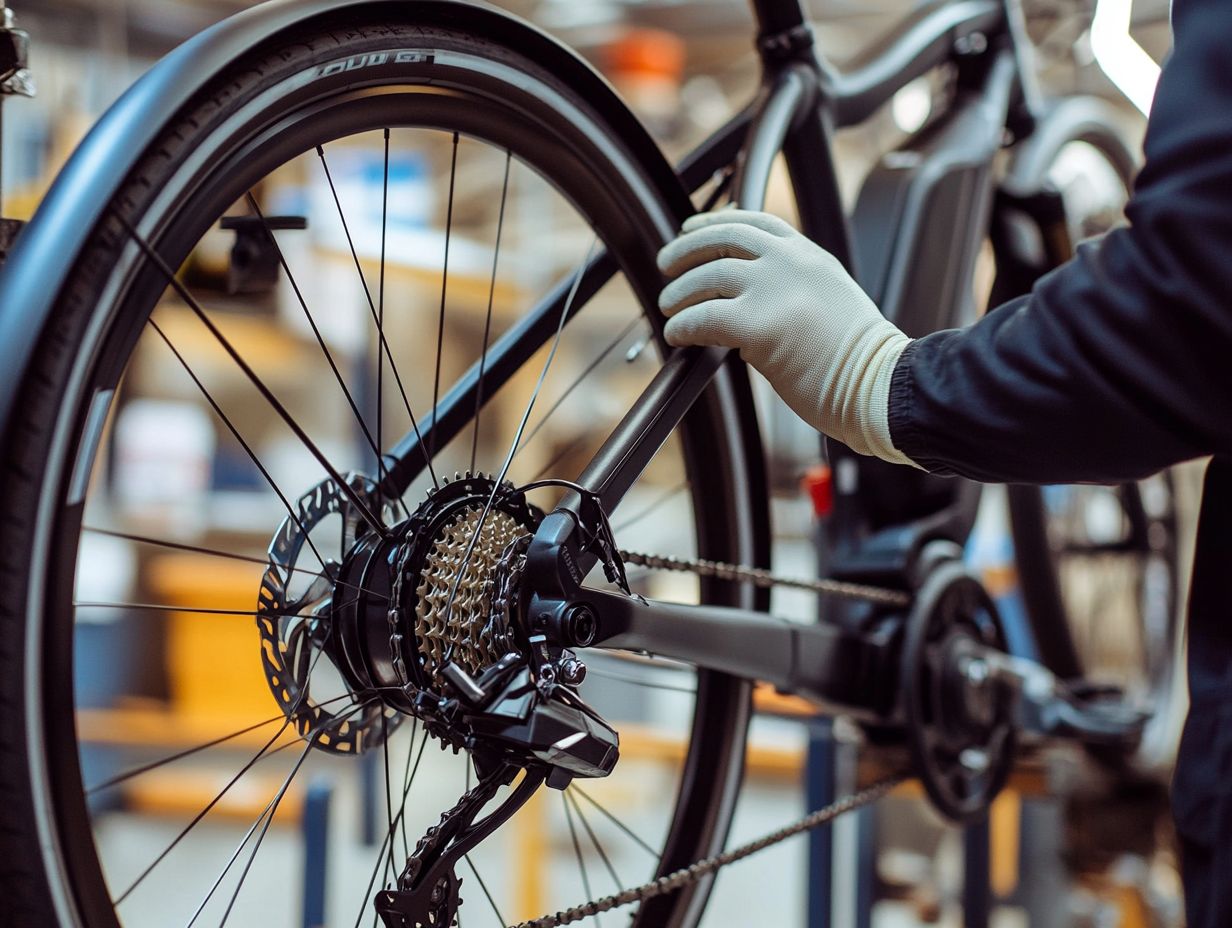
What are common electric bicycle noise problems?
Common electric bicycle noise problems include grinding, clicking, squeaking, and rattling noises. These noises can be caused by various issues such as loose components, worn out parts, or improper maintenance. Common problems can also include a throttle not functioning or a loose handlebar.
How do I identify the source of the noise?
To identify the source of the noise, start by checking each component of the electric bicycle. Tighten any loose bolts or screws, check for any signs of wear and tear, and make sure all parts are properly lubricated. If the noise continues, check the rear wheel or display settings for possible adjustments. If the noise persists, take your bicycle to a professional for a thorough inspection.
What should I do if my electric bicycle is making a grinding noise?
A grinding noise may indicate issues like a misaligned chain or worn-out gears. Check these parts and adjust or replace them as needed.
Don t forget about the brakes. If the noise continues, it s time to seek professional help!
How can I fix a clicking noise coming from my electric bicycle?
A clicking noise is often caused by a loose chain or a bent derailleur. Adjusting or replacing these components can help eliminate the noise.
Also, check if the brake sensor is broken. If the problem persists, it may be related to the motor or battery, and you should seek professional assistance.
Why is my electric bicycle making a squeaking noise?
Squeaking noises can result from a lack of lubrication on moving parts like the chain, pedals, or brakes. Apply lubricant to these areas to reduce the noise.
If the squeaking continues, it could indicate worn-out or damaged components, such as brake pads or brake discs. Have your bicycle inspected by a professional!
How can I prevent electric bicycle noise problems?
Proper maintenance and regular inspections can help prevent noise problems. Lubricate all components and tighten any loose bolts or screws.
Act now to keep your ride smooth and quiet! Regularly take your bicycle to a professional for tune-ups and check-ups to identify and prevent potential noise issues, especially regarding your brakes that use fluid to work and the front wheel.

